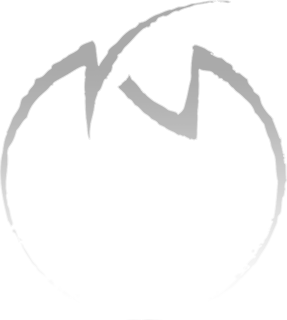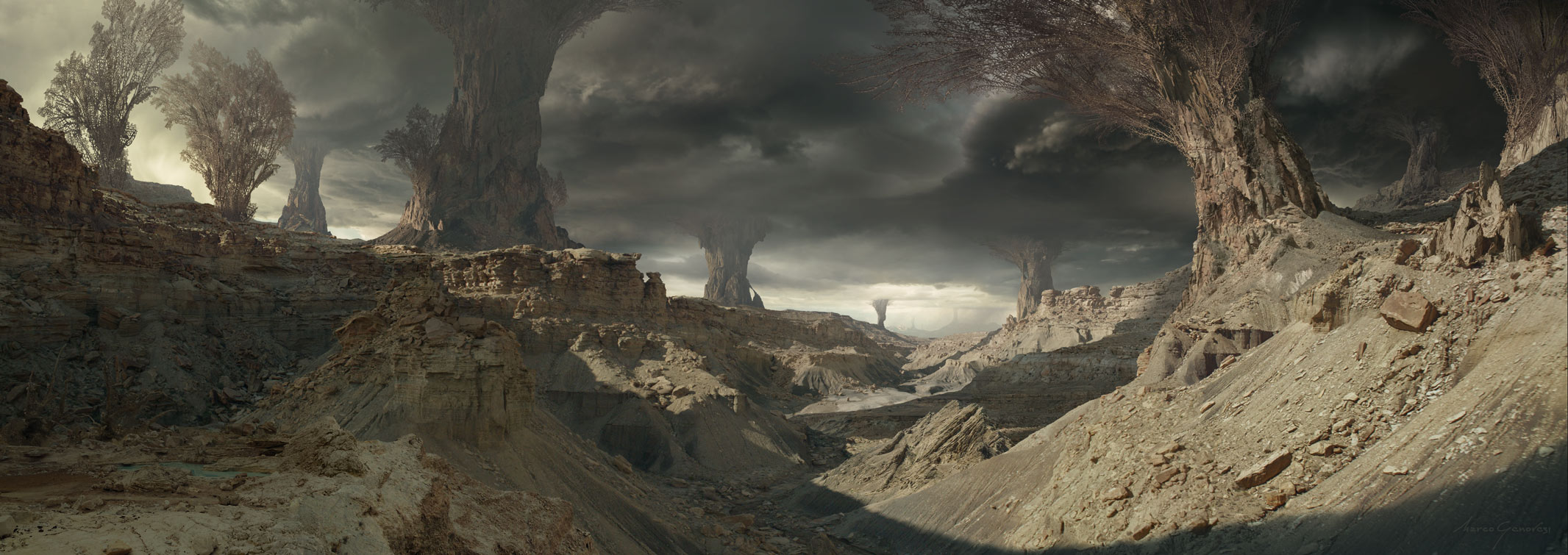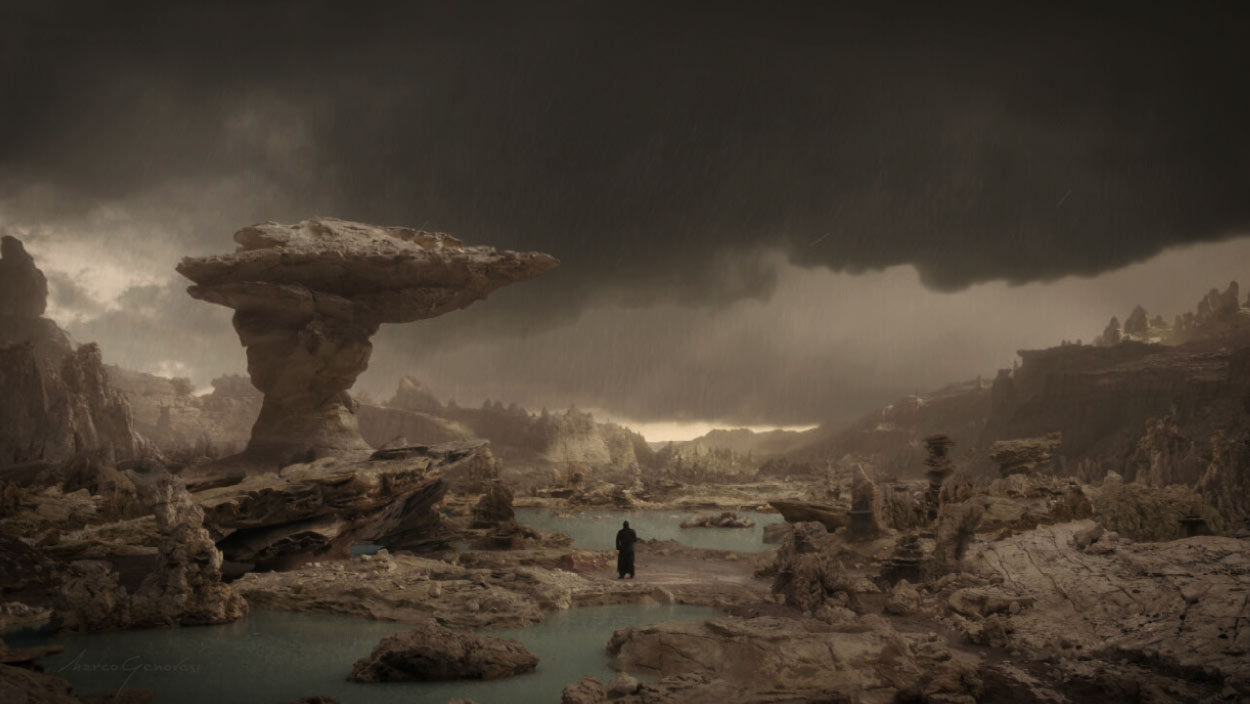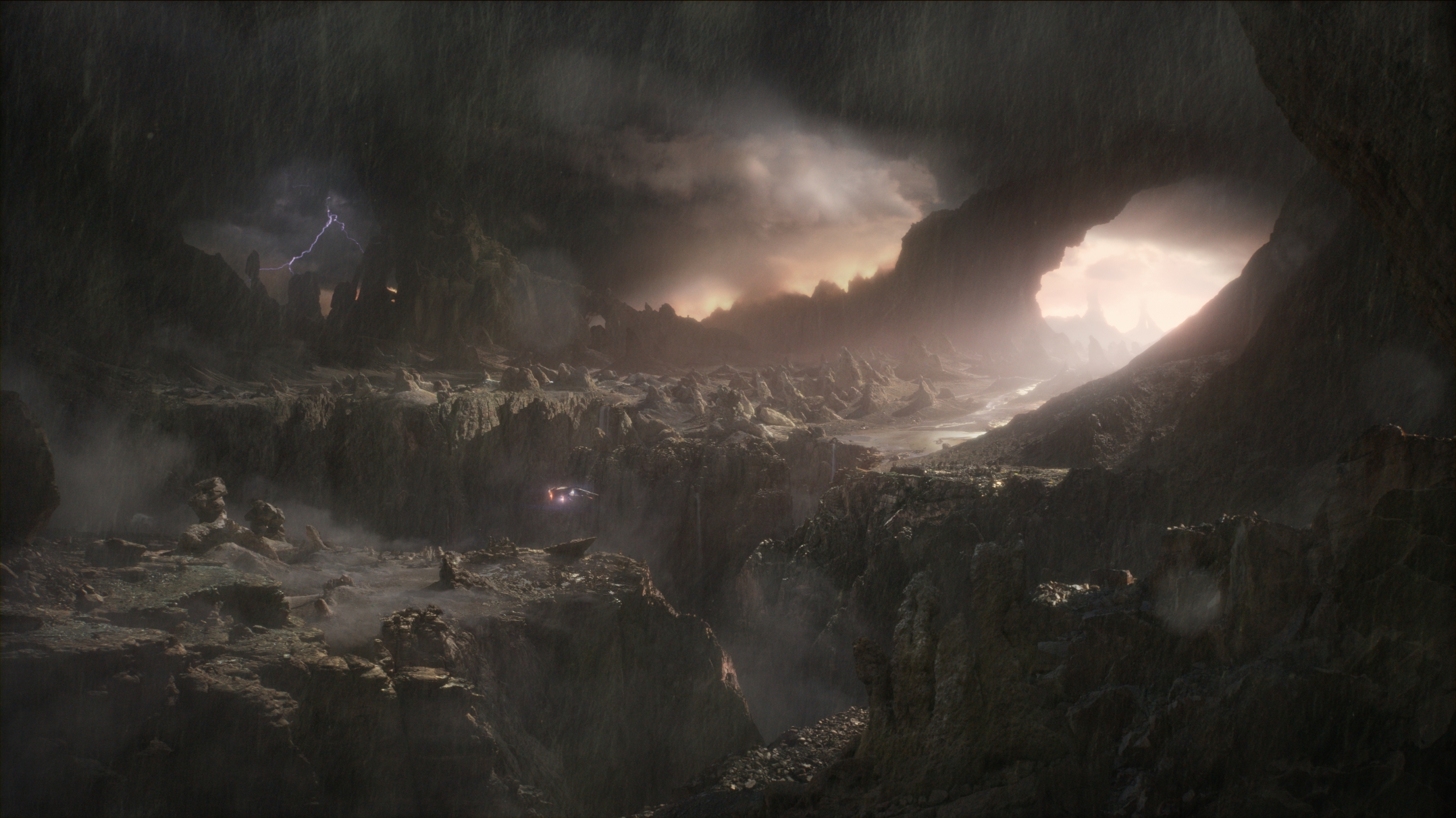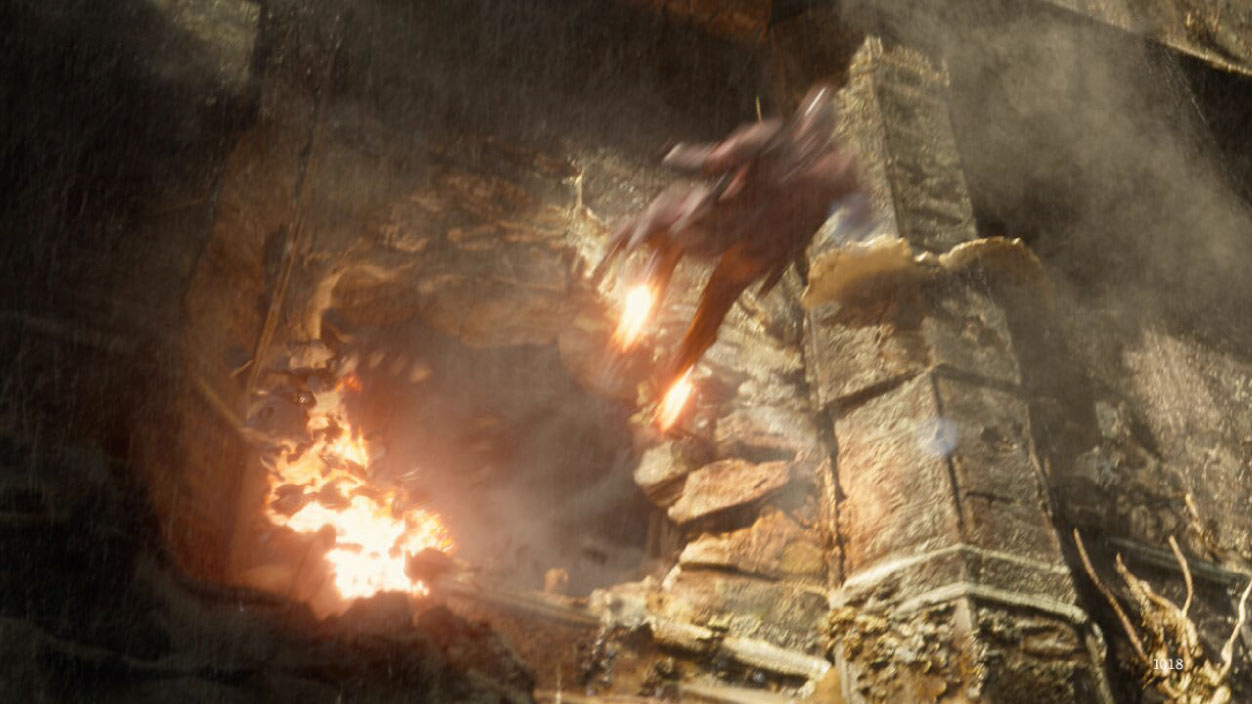Who had the pleasure of working on a Marvel movie, probably knows that this studio is use to keep the creative process fluid until the very end of the show. Early decisions are kept open for changes and new directions are often taken, sometimes steering entire sequences of the film away from the original concept art.
Guardians of the Galaxy was no exception.
In fact, although many ideas stayed the same through out the development of the visual effects, other changed a few times.
A good instance is the planet Morag which opens the film.
The original concept art pictured it as a desertic and desolated landscape featured by gigantic pinnacles and humongous corals.
My first involvement with the show, was for a trailer shot to be done in a couple of weeks time. So, when I first started the matte painting I based it on the original brief. Unfortunately half way through the work I was communicated that the idea of the corals and the pinnacles was gone.
There must have been a good reason for this decision to be taken. However, I believe that it might be worth to show where my work was before the sudden change in direction.
